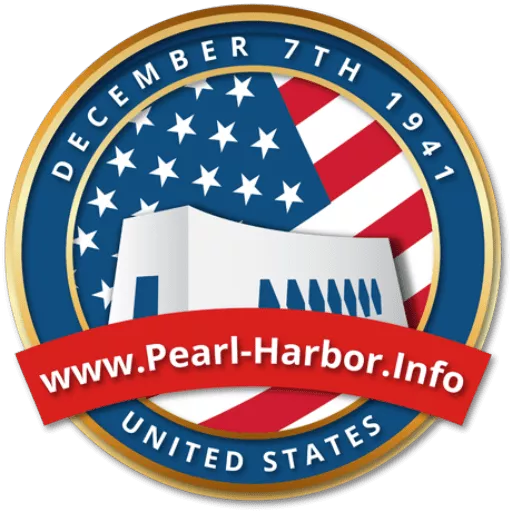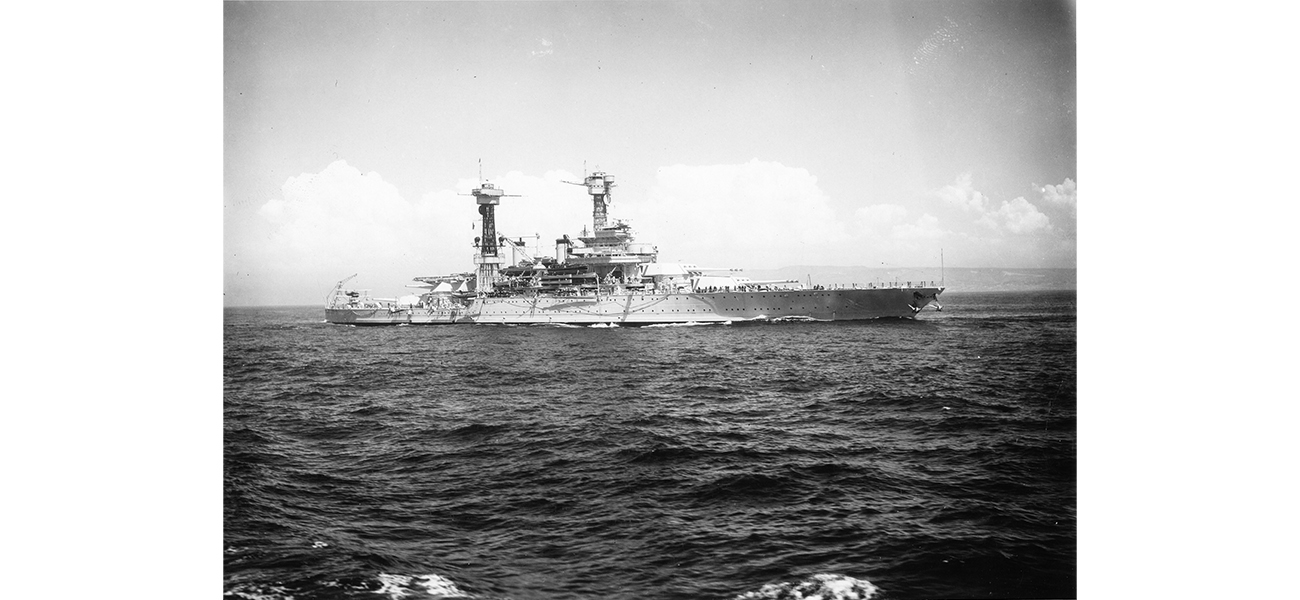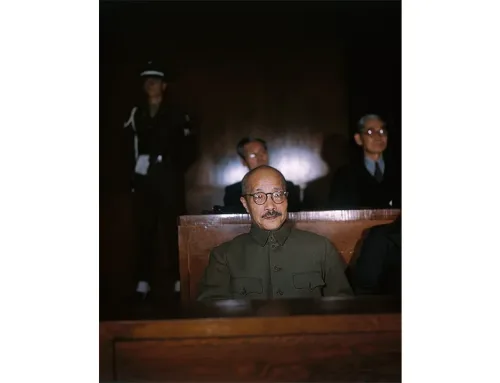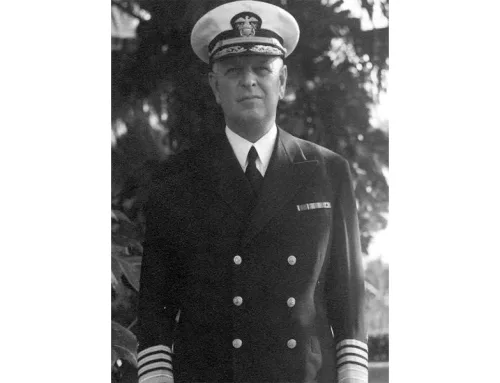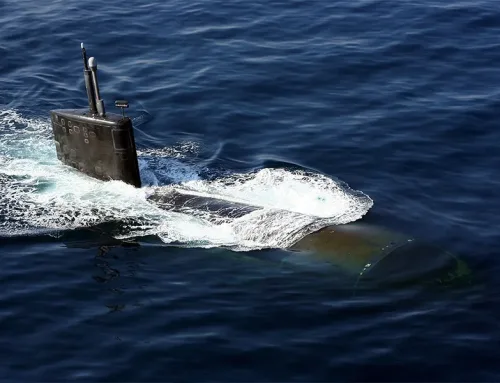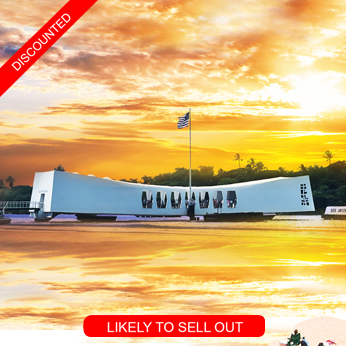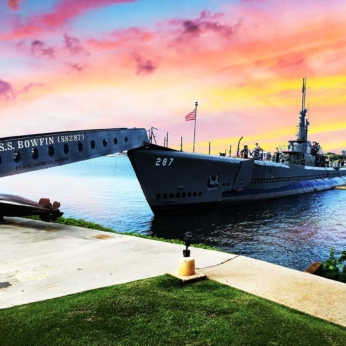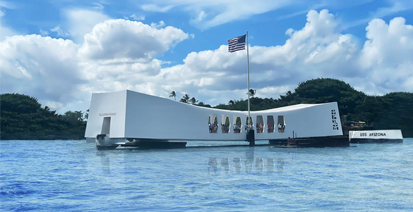The Fate of the USS California
Naval History & Heritage Command, Public domain, via Wikimedia Commons
The USS California, a Tennessee-class battleship, holds a significant place in the annals of naval history. As a symbol of American resilience and naval prowess, the USS California’s journey from its inception to its decommissioning is a story filled with valor, tragedy, and technological evolution.
Laid down on October 25, 1916, at the Mare Island Naval Shipyard in California, the USS California was launched on November 20, 1919. As the flagship of the Pacific Fleet, its initial purpose was to protect American naval power across the Pacific Ocean.
The USS California was an impressive feat of engineering. Measuring 624 feet in length and weighing over 32,300 tons, it was armed with twelve 14-inch guns, fourteen 5-inch/51 caliber guns, and eight 5-inch/25 caliber anti-aircraft guns. The ship’s armor was robust, designed to withstand significant damage, and its propulsion system allowed it to reach speeds of up to 21 knots.
In its early years, the USS California served primarily as a deterrent and a peacekeeping force in the Pacific. It participated in numerous training exercises and goodwill missions, showcasing American naval strength and fostering international relations.
The outbreak of World War II dramatically shifted the USS California’s role. Stationed at Pearl Harbor, Hawaii, the battleship was thrust into the forefront of American naval strategy.
The Attack on Pearl Harbor
On December 7, 1941, the USS California was moored at Battleship Row in Pearl Harbor when Japanese aircraft launched a surprise attack. Despite efforts to repel the attackers, the ship was hit by two torpedoes and a bomb, causing severe damage and leading to its eventual sinking. The Pearl Harbor attack was a pivotal moment in the USS California’s history, marking a significant event that reshaped its fate.
In the aftermath of the attack, immediate rescue operations were launched to save trapped sailors and stabilize the damaged ship. Salvage operations began soon after, and by March 1942, the USS California was refloated and sent to the Puget Sound Navy Yard for extensive repairs and modernization. The USS California salvage was a remarkable effort, showcasing the resilience of the Navy.
Following its repair, which included updated armaments and advanced radar systems, the USS California returned to service in January 1944. It was redeployed to the Pacific Theater, where it participated in several crucial battles. The USS California’s restoration efforts enabled it to return stronger and more capable than before.
The USS California played a vital role in the Battle of Saipan, the Battle of Leyte Gulf, and the Battle of Okinawa. Its formidable firepower provided crucial support for amphibious assaults and contributed significantly to the Allied victories in these engagements. The Battleship USS California proved its worth in these pivotal World War II naval battles.
After World War II, the USS California continued to serve in a reduced capacity. It was involved in various post-war operations and training exercises until it was deemed surplus to requirements. Routine but important naval duties marked the USS California service in the later years.
The USS California was decommissioned at the Philadelphia Naval Shipyard on February 14, 1947. It was stricken from the Naval Vessel Register on March 1, 1959, and sold for scrap. The USS California sinking and eventual scrapping marked the end of an era for this storied battleship.
The USS California crew members have shared numerous personal stories and testimonies, adding a human element to its historical narrative. These accounts highlight the camaraderie, bravery, and sacrifices of those who served aboard the ship. USS California survivors often recount harrowing and heroic moments on the battleship.
The experiences and lessons from the USS California influenced future naval strategies and ship designs. The importance of modernization and the need for advanced defense systems became evident, shaping the evolution of the U.S. Navy. The USS California’s war history provides valuable naval warfare and strategy insights.
The USS California’s journey from its inception to its final fate is a remarkable tale of resilience, adaptation, and service. Its legacy continues to inspire and remind us of the sacrifices made by those who serve in the defense of freedom. The USS California timeline reflects a storied past that continues to captivate and educate.
Most Popular Oahu Tours
Best Pearl Harbor Tours

The following tours are recognized as the most popular Pearl Harbor Tours on Oahu. While generally, our price is the lowest in the market now, for a limited time, they are on sale too. Please be advised that Pearl Harbor tickets and USS Arizona Memorial tickets are included in all of our Arizona Memorial Tours, Pearl Harbor small group tours, and private Pearl Harbor tours.
